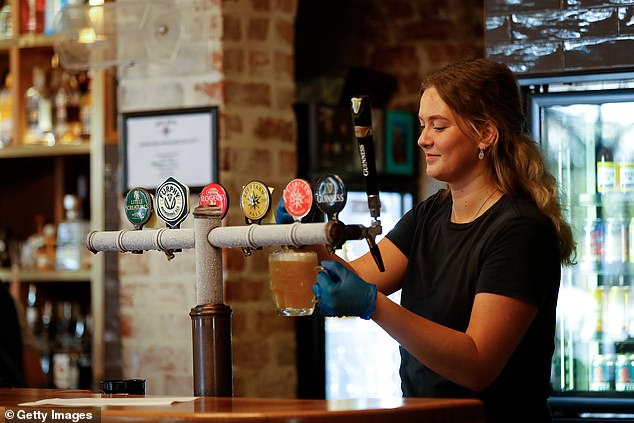Proof Anthony Albanese’s cost of living crisis is getting worse as immigration continues to surge
- Wage growth has slowed during the immigration wave
Australia’s cost of living crisis is getting worse as high immigration hurts wage growth.
Wage levels fell back to 3.5 percent in the year to September, marking the weakest growth in two years.
Overall inflation fell to 2.8 percent over the same period, thanks to one-time $300 electricity rebates from the federal government.
But with wage growth at weaker levels, real wages, adjusted for inflation, are growing by just 0.7 percent – despite Labour’s election promise to ‘get wages moving again’.
This came as a net 449,060 migrants moved to Australia in the year to September, increasing the available workforce.
That is significantly higher than the government’s forecast of 260,000 for the 2024-2025 financial year in the May budget.
The latest immigration figures from the Australian Bureau of Statistics have confirmed Finance Minister Steven Kennedy’s admission at a Senate hearing last week that more foreigners than expected will continue to arrive on a permanent and long-term basis.
“Instead of leaving, many migrants have extended their stay by applying for new visas, including permanent visas,” he said.
Australia’s cost of living crisis is getting worse as high immigration hurts wage growth
‘Lower than expected migrant departures mean net overseas migration in 2023-24 and 2024-25 is likely to be higher than forecast at the Budget.’
The large influx of migrants means greater demand for healthcare, education and insurance, with services inflation rising 4.6 percent and stopping the Reserve Bank of Australia from cutting interest rates.
Daniel Wild, deputy director of the Institute of Public Affairs, said high immigration was fueling Australia’s cost of living crisis, with underlying inflation still above the Reserve Bank’s 2 to 3 percent target of 3 .5 percent.
“Australians struggling with the cost of living crisis and rising housing costs cannot welcome the latest record migration influx,” he said.
“It shows once again that the federal government has no intention of stemming the tide of record inflationary migration, which is leaving Australians worse off.”
The vacancy rate in the Australian capital is still extremely low at 1.2 percent. Data from SQM Research also shows that house rents rose by 4.9 per cent in the year to November to an average level of $837 per week.
Property is also particularly out of reach with house prices in the capital rising 6.5 per cent to above $1 million in the year to October, CoreLogic data shows.

Wage levels fell back to 3.5 percent in the year to September, marking the weakest growth in two years
Civil servants fared better, with their wages rising 3.7 percent last year, compared with 3.5 percent for private sector civil servants.
Australian Industry Group CEO Innes Willox warned of inflationary consequences if public sector wages continued to exceed private sector wages – something not seen since before the pandemic.
“Higher public sector wage outcomes only add unnecessary fuel to the ongoing inflation fire,” he said.
Weak productivity means that costs such as wages are passed on to consumers through higher prices, prolonging high inflation.
“It is important that all parties work together to slow wage growth, especially without clear and demonstrable productivity offsets,” Willox said.
Prime Minister Anthony Albanese faces a tough re-election next year if inflationary pressures do not subside.
